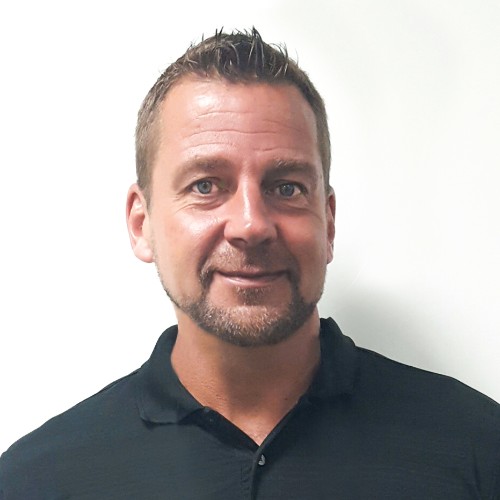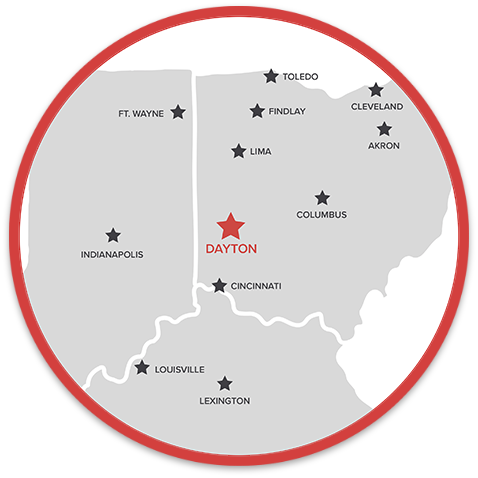The A1 Difference
Keeping your system running is essential to your business. A1’s proven inspection process and online inspection reports provide you with the best inspection service.

The Process
- All devices are barcoded, labeled, & scanned.
- The scan is logged with a date and time stamp.
- Digital pictures are taken of the before (Open) and after (Closed) state.
- The device is checked against the product recall database.
- The report is available online 24/7/365.
Benefits
- Accurately tracks all devices in your facility
- Ensures all devices are inspected.
- Protects against recalls.
- Easy Accessibility 24/7/365.
- 10% discount with a 6-year agreement.
Fire Alarm
Fire Alarm inspections are prone to errors given the sheer number of devices.
Required
Functional Test
Annual
Battery replacement:
Every 5 years
Sensitivity testing on detectors:
1, 2, & 5 years
Recommended
Battery replacement:
Every 2 years
Smoke/duct detector replacement:
Every 10 years
Recommended sensitivity testing of smoke detectors:
Every 3 years
Fire Extinguishers
Fire extinguishers are a fast and easy method to fight small and non-spreading fires. It is critical to have them operating to prevent small fires from quickly growing out of control.
Required
Visual inspection:
Monthly
Hydrostatic testing (carbon dioxide, wet chemical and pressurized water):
Every 5 years
6 Year maintenance
Hydrostatic testing (dry chemical and clean agent):
Every 12 years
Fire Sprinklers
Wet
A wet pipe sprinkler system employing automatic sprinkler heads attached to a piping system containing water and connected to a water supply so that water discharges immediately from sprinklers opened by heat from a fire.
Annually
Riser or pump room temperature is above 40
Hangers/seismic bracing (from floor level)
Pipe and fittings (from floor level)
Installed sprinklers (from floor level)
Spare sprinklers in spare head cabinet
Information signs
Hose connections/valves (if applicable)
Water flow alarm device is free of physical damage
Supervisory alarm/signal device free of physical damage
Hydraulic nameplate
Pressure reducing and relief valves (if applicable)
Fire department connection (FDC)
Gauges
Alarm valves (exterior)
All valves open and free of damage
Pressure relief and circulation relief valves
Water flow alarm test
Main drain test
Control valve
Anti-freeze solution (if applicable)
Control valve supervisory
Receipt of signal to monitoring service
Semi-Annually
Water flow alarm device free of physical damage
Supervisory alarm/signal device free of physical damage
Hydraulic nameplate
All valves, including hose valves, open and free of damage
Pressure reducing and relief valves
Gauges
Fire department connection (FDC)
Main drain test
Water flow alarm
Control valve supervisory
Quarterly
DRY, PREACTION, DELUGE
A dry pipe sprinkler system is filled with pressurized air. Dry pipe sprinkler systems are installed in areas where wet pipe systems may be inappropriate, such as areas where freezing temperatures might be expected.
Annually
Inspect all gauges
Inspect all sprinkler heads
Inspect all piping and fittings
Inspect hangers and seismic bracing
Inspect spare head box
Operate every control valve
A flow test is conducted at each riser
Partial flow drip test is performed
Obstruction investigation (repairs > 20 sprinklers)
Semi-Annually
Riser or pump room temperature is above 40
Water flow alarm device free of physical damage
Supervisory alarm/signal device free of physical damage
Hydraulic nameplate
Exterior valve
Exterior quick opening device
All valves, including hose valves, open and free of damage
Gauges
Fire department connection (FDC)
Dry valve priming water
Test quick opening device
Main drain test
Water flow alarm
Low pressure alarm
Drain drum drips
Control valve supervisory
Quarterly
Exit & Emergency Lights
Exit and Emergency Lights are a first line of defense in emergency situations. Most buildings still utilize incandescent lamp technology which is maintenance intensive and prone to failure. Regular inspections are necessary to ensure optimal performance in an emergency situation.
Warning: A1 does not recommend a push button test. The residual voltage in the batteries may be enough to run the quick button test but may not be enough to operate in an emergency.
Required
30 second quick check & battery check:
Monthly
90 min functional test, verification of charge voltage, alignment of heads, hazard assessment, inspection sticker, & report:
Annually
Recommended
Battery replacement recommended:
Every 2 years
Evaluate LED or Photoluminescence options:
Fast ROI
Kitchen Hoods
Kitchen Hood systems are one of the most widely used fire protection systems given the fire source and fuel load. Additionally, the environment makes these systems prone to damage and residue build-up, which require increased maintenance.
Required
Functional Test:
Semi-Annually
Change Fusible Links:
Semi-Annually
Test for required cleaning (NFPA 96):
Semi-Annually
Hydrostatic testing of cylinder, replace cartridge, regulator test of wet chemical containers, hose assemblies:
Every 12 Years
Kitchen Exhaust Cleaning
A1 service techs will remove all soiled filters from your exhaust system and replace them with clean filters as well as cleaning the soiled filters. By cleaning the filters off site, your facility will lower the amount of grease going down your drain by up to 70%. This service will reduce labor, electric, water, and chemical expenses while reducing your exposure to fires and EPA fines.
Required
Solid fuel (wood, charcoal):
Monthly
High volume, 24 hour operations, charbroiling, wok cooking:
Every 3 months
Systems serving moderate volume cooking operations:
Every 6 months
Systems serving low-volume cooking operations, such as churches, day camps, seasonal buisiness, or senior centers:
Anually
Filter Maintenance
Kitchen Hood systems are one of the most widely used fire protection systems given the fire source and fuel load. Additionally, the environment makes these systems prone to damage and residue build-up, which require increased maintenance.
Every 6 Months
Replace all soiled grease filters with clean filters, clean and service all filters
Aerosol Suppression
Aerosol fire suppresion systems are a particle-based form of suppression that employs an extinguishing agent consisting of very fine solid particles and gaseous matter, therefore it leaves very little residue in the affected area. This is one of the most efficient forms of suppression.
Required
Functionality testing:
Every 6 months
Inspect enclosure for dramatic changes in leakage:
Annually
Sensitivity testing on detectors:
1, 2, 5 years
Replace generators:
10 years
Recommended
Battery replacement:
Every 2 years
Sensitivity testing of detectors:
Every 3 years
smoke/duct detector replacement:
Every 10 years
Clean Agent
Clean Agent Suppression Systems protect high dollar mission critical assets. A fire hazard would create havoc and substantial business interruption. It is crucial to inspect these systems and ensure optimal performance of the fire protection system.
Required
Agent quantity and pressure:
Every 6 months
Functionality testing:
Annually
Sensitivity testing on detectors:
Semi-Annually
Test for required cleaning (NFPA 96):
Every 1, 2, and 5 years
Inspect enclosure for dramatic changes in leakage:
Annually
Test discharge hoses, check valves, change initiators:
Every 5 years
Change out CGA (compressed gas actuator):
Every 10 years
Recommended
Battery replacement recommended:
Every 2 years
Sensitivity testing of detectors:
Every 3 years
Smoke/duct detector replacement:
Every 10 years
Backflow Preventers
Backflow preventers are required to be inspected and tested to prevent the contamination of our drinking water supply. Additionally, water must flow forward to provide the water necessary for the fire protection system. Thus, it is critical to ensure these devices are working properly and as such most Jurisdictions track compliance directly.
Required
Reduced pressure backflow relief port:
Weekly
Full forward flow test:
Annually
Fire Pumps
All sprinkler systems are dependant upon having the proper pressure to supply the system. Fire pumps are installed to increase the source pressure and ensure the system is fed properly. So testing and inspecting your fire pump is critical to the entire fire protection system. Without it, your lives and property are at stake.
Required
Fire pump casing relief valve:
Weekly
Fire pump pressure relief valve:
Weekly
Churn test (Diesel):
Weekly
Churn test (Electric):
Weekly
Full fire pump test and inspection:
Annually
Fire Hydrant
Fire hydrants are an important fire protection measure which provide firefighters access to water during an emergency. These devices should be regularly tested and inspected to ensure water is available during an emergency.
Required
Flow test:
Annually
Exposed piping inspection:
Annually
Flow test on exposed & undergroud piping:
Every 5 years
Stand Pipes
A standpipe is a rigid water pipe building into multi-story buildings in a vertical position or bridges in a horizontal position. The standpipe has connections for hoses, allowing manual application of water to a fire. Within the context of a building or bridge, a standpipe serves the same purpose as a fire hydrant.
Required
Standpipe system inspection:
Annually
Standpipe full flow test:
Every 5 Years
Hydrostatic test of manual and semi-automatic dry standpipes:
Every 5 Years
Fire Hose
A building fire hose is connected to a standpipe system and allows for a manual application of water to a fire. Recently, fire hoses have been removed to deter the public from fighting fires and encourage their prompt evacuation. A professional firefigher will carry their own hose to the standpipe connection and fight the fire.
Required
Inspect hose connections, hose racks, hose valves position and operating test
Annually
Hydrostatic testing of cylinder, Replace cartridge, Regulator test of wet chemical containers, hose assemblies:
Every 12 Years
Within initial 5 years and every 3 years thereafter
Test hose connections (full flow)
Test hose rack pressure reducing valves (full flow)
Internal Pipe
The purpose of this inspection is to check for the presence of sufficient corrosion or foreign material capable of obstructing sprinklers and rendering the system ineffective in the event of a fire. These internal inspections are especially critical for dry-pipe and preaction sprinkler systems.
Required
Functional Test, Change Fusible Links, Test for required cleaning (NFPA 96):
Semi-Annually
Hydrostatic testing of cylinder, Replace cartridge, Regulator test of wet chemical containers, hose assemblies:
Every 12 Years
Fire & Smoke Dampers
Fire & Smoke Dampers play a vital role in your facilities fire protection plan. They prevent the flow of toxic smoke and fumes throughout the facility by creating isolated compartments. Typically, these devices are located out of sight which means blockages or failures are difficult to detect. It is therefore vitally important to ensure these devices are inspected on a regular schedule.
Required
Functional Test:
One year after Installation
Functional Test:
Every 4 years thereafter
Obstruction Test:
Every 5 years
Recommended
Full functional and Obstruction Test:
Annually
Fire Doors
Fire Doors play a vital role in your facilities fire protection plan. Like fire and smoke dampers, they prevent the flow of toxic smoke and fumes throughout the facility by creating isolated compartments. These devices hide in plain sight and are plagued with DIY modifications, blockage, and code violations. It is critically important to make sure your doors are regularly inspected for compliance.
Required Anually
- The door frame, hinges, hadware, and non-combustible threshold are secured, aligned and in working order
- No open holes or breaks exist in surfaces of either the door or the frame
- Glazing, vision light frames, and glazing pads are intact and securely fastened in place, if so equipped
- No parts are missing or broken
- Door clearances at the door edge to the frame, on the pull side of the door, do not exceed the recommended clearances
- Floor space on both sides of the opening is clear of obstructions and door leaves open fully and close freely
- If a coordinator is installed, the inactive leaf closes before the active leaf
- Auxillary hardware items that interfere or prohibit operation are not installed on the door frame
- The self closing device is operational, that is, the active door completely closes when operated from the full position
- Latching hardware operates and secures the door when it is in the closed position
- No field modifications to the door assembly have been performed that void the label
- Gasketing and edge seals, where required, are inspected to verify their presence and integrity
Do you receive online inspections?
Get your Online ReportsSee the benefits of Online Inspection Reports.
View a sample reportAt Your Service
For inspection questions or to speak to inspection management, please contact us at 1-937-572-9651 or click here to send an email to our team.
At Your Service
For more details and a free VSP cost analysis of your inspection needs, please contact us at 1-937-657-7643 or click here to send an email to our team.








